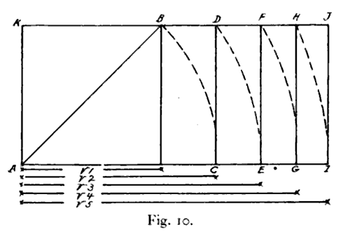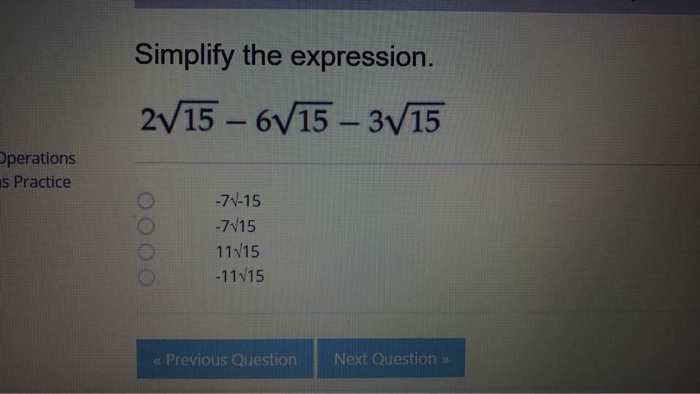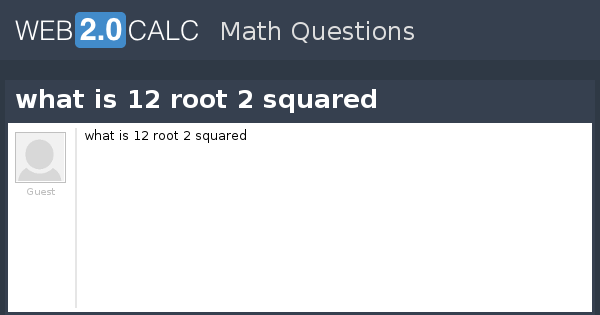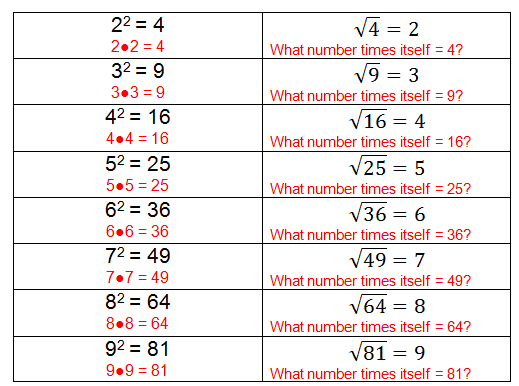Topic is square root of 5 a rational number: Discover whether the square root of 5 is a rational number as we delve into the intriguing world of mathematics. Learn the definitions, explore proofs, and understand why this number holds a special place in the realm of irrational numbers. Join us on this enlightening mathematical journey.
Table of Content
- Is the Square Root of 5 a Rational Number?
- Introduction to Rational and Irrational Numbers
- Understanding the Square Root of a Number
- Mathematical Proof Techniques
- Proof by Contradiction
- Proof That the Square Root of 5 is Irrational
- Properties of Irrational Numbers
- Historical Context of Irrational Numbers
- Importance of Irrational Numbers in Mathematics
- Applications of Irrational Numbers in Real Life
- Common Misconceptions About Rational and Irrational Numbers
- YOUTUBE: Trong video này, chúng ta sẽ tìm hiểu lý do tại sao căn bậc 5 của 5 là một số vô tỷ. Hãy cùng khám phá chứng minh chi tiết và các bước giải thích để hiểu rõ hơn về số vô tỷ.
Is the Square Root of 5 a Rational Number?
The question of whether the square root of 5 is a rational number can be answered by understanding the definitions and properties of rational and irrational numbers.
Definition of Rational Numbers
A rational number is any number that can be expressed as the quotient or fraction of two integers, where the numerator is an integer, and the denominator is a non-zero integer. In other words, a rational number can be written in the form p/q, where p and q are integers, and q ≠ 0.
Definition of Irrational Numbers
An irrational number is a number that cannot be written as a simple fraction - that is, it cannot be expressed as a ratio of two integers. Irrational numbers have non-repeating, non-terminating decimal expansions.
Proof that √5 is Irrational
To determine if √5 is rational or irrational, we use a proof by contradiction:
- Assume that √5 is a rational number. This means that it can be expressed as a fraction a/b, where a and b are coprime integers (i.e., they have no common factors other than 1).
- According to this assumption, we have: (√5) = a/b
- Squaring both sides gives: 5 = a²/b²
- Rearranging gives: 5b² = a²
- This equation implies that a² is divisible by 5. Therefore, a must also be divisible by 5 (since 5 is a prime number).
- Let a = 5k for some integer k. Substituting back into the equation gives: 5b² = (5k)² or 5b² = 25k²
- Simplifying this gives: b² = 5k²
- This implies that b² is also divisible by 5, and hence b must be divisible by 5.
- However, this contradicts our initial assumption that a and b are coprime, as both are divisible by 5.
Therefore, our initial assumption that √5 is a rational number must be incorrect. Thus, √5 is an irrational number.
Conclusion
In conclusion, the square root of 5 cannot be expressed as a fraction of two integers. Hence, √5 is an irrational number.

READ MORE:
Introduction to Rational and Irrational Numbers
Understanding the difference between rational and irrational numbers is fundamental to grasping many concepts in mathematics.
Rational Numbers: Rational numbers are numbers that can be expressed as the quotient or fraction \(\frac{p}{q}\) of two integers, where \(p\) is the numerator, \(q\) is the denominator, and \(q \neq 0\).
- They can be positive, negative, or zero.
- Examples include: \(\frac{1}{2}\), \(-\frac{4}{5}\), \(3\), and \(0\).
- Decimal representation of rational numbers is either terminating or repeating.
Irrational Numbers: Irrational numbers cannot be expressed as a simple fraction of two integers. Their decimal representations are non-terminating and non-repeating.
- They cannot be written as \(\frac{p}{q}\), where \(p\) and \(q\) are integers.
- Examples include: \(\sqrt{2}\), \(\pi\), and \(e\).
- They are crucial for understanding the real number system.
Distinguishing Features:
- Rational numbers can be precisely located on the number line, while irrational numbers fill in the gaps between them.
- Both types of numbers are essential for different mathematical theories and real-world applications.
Recognizing the difference between these two types of numbers helps in solving various mathematical problems and in understanding the structure of the number system.
Understanding the Square Root of a Number
The square root of a number is a value that, when multiplied by itself, gives the original number. It is an essential concept in mathematics with significant applications.
Definition: The square root of a number \( x \) is a number \( y \) such that \( y^2 = x \). It is denoted as \( \sqrt{x} \).
Examples:
- \(\sqrt{4} = 2\) because \(2 \times 2 = 4\).
- \(\sqrt{9} = 3\) because \(3 \times 3 = 9\).
- \(\sqrt{16} = 4\) because \(4 \times 4 = 16\).
Square roots can be categorized into rational and irrational numbers:
Rational Square Roots:
- A square root is rational if the original number is a perfect square (e.g., 4, 9, 16).
- These square roots can be expressed as exact fractions (e.g., \(\sqrt{4} = 2\) or \(\sqrt{9} = 3\)).
Irrational Square Roots:
- A square root is irrational if the original number is not a perfect square (e.g., 2, 3, 5).
- These square roots cannot be expressed as exact fractions and have non-terminating, non-repeating decimal expansions (e.g., \(\sqrt{2}\), \(\sqrt{3}\), \(\sqrt{5}\)).
Properties of Square Roots:
- Non-negativity: The square root of a non-negative number is non-negative.
- Product Property: \(\sqrt{a \times b} = \sqrt{a} \times \sqrt{b}\) for non-negative \(a\) and \(b\).
- Quotient Property: \(\sqrt{\frac{a}{b}} = \frac{\sqrt{a}}{\sqrt{b}}\) for non-negative \(a\) and positive \(b\).
- Unique Positive Root: For any non-negative number \(x\), there is a unique non-negative number \(y\) such that \(y^2 = x\).
Understanding square roots is crucial for solving quadratic equations, analyzing geometric shapes, and in various fields of science and engineering.
Mathematical Proof Techniques
Mathematical proofs are logical arguments that demonstrate the truth of a given statement. Various techniques are used in proofs to ensure rigorous and clear reasoning.
Common Proof Techniques:
- Direct Proof:
A direct proof involves a straightforward chain of logical steps that establish the truth of a statement. This method is often used to prove implications, where we start with the assumption that the premise is true and then logically deduce the conclusion.
- Example: Proving that the sum of two even numbers is even.
- Proof by Contradiction:
This technique involves assuming the opposite of what we want to prove, then showing that this assumption leads to a contradiction. Since the assumption leads to an impossible situation, the original statement must be true.
- Example: Proving that \(\sqrt{5}\) is irrational.
- Proof by Induction:
Proof by induction is used to prove statements about natural numbers. It consists of two steps:
- Base Case: Verify that the statement holds for the initial value (usually \(n = 1\)).
- Inductive Step: Assume that the statement holds for some integer \(k\), then prove that it also holds for \(k + 1\).
- Example: Proving that the sum of the first \(n\) natural numbers is \(\frac{n(n+1)}{2}\).
- Proof by Contrapositive:
In this method, we prove an implication \(P \implies Q\) by proving its contrapositive \(\neg Q \implies \neg P\). If the contrapositive is true, then the original implication must also be true.
- Example: Proving that if a number is not even, then it is not divisible by 2.
These proof techniques form the foundation of mathematical reasoning, enabling mathematicians to establish the validity of propositions with certainty and clarity.
Proof by Contradiction
Proof by contradiction is a powerful technique used to establish the truth of a statement by demonstrating that assuming the opposite leads to a contradiction. This method is especially useful for proving that certain numbers are irrational.
Let's use proof by contradiction to show that the square root of 5 is irrational.
- Assume the opposite of what we want to prove. Suppose that \(\sqrt{5}\) is a rational number.
- If \(\sqrt{5}\) is rational, then it can be expressed as a fraction \(\frac{a}{b}\), where \(a\) and \(b\) are coprime integers (i.e., they have no common factors other than 1), and \(b \neq 0\).
- According to this assumption, we have: \(\sqrt{5} = \frac{a}{b}\).
- Squaring both sides of the equation gives: \(5 = \frac{a^2}{b^2}\).
- Rearranging this equation, we get: \(5b^2 = a^2\).
- This implies that \(a^2\) is divisible by 5. Therefore, \(a\) must also be divisible by 5 (since 5 is a prime number and if a prime number divides the square of a number, it must also divide the number itself).
- Let \(a = 5k\) for some integer \(k\). Substituting this back into the equation gives: \(5b^2 = (5k)^2\), which simplifies to \(5b^2 = 25k^2\).
- Dividing both sides of the equation by 5, we get: \(b^2 = 5k^2\).
- This implies that \(b^2\) is also divisible by 5, and hence \(b\) must be divisible by 5.
- However, this contradicts our initial assumption that \(a\) and \(b\) are coprime (since both \(a\) and \(b\) are now shown to be divisible by 5).
Therefore, our initial assumption that \(\sqrt{5}\) is a rational number must be incorrect. Hence, \(\sqrt{5}\) is an irrational number.
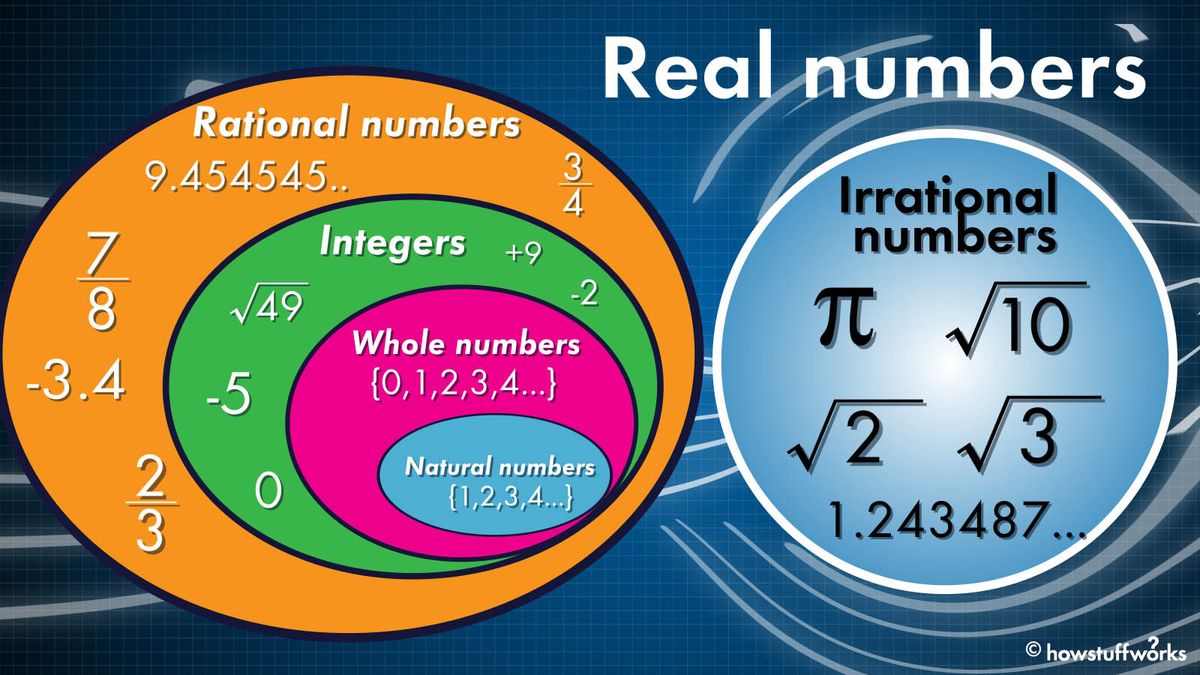
Proof That the Square Root of 5 is Irrational
To prove that the square root of 5 (√5) is irrational, we will use the method of proof by contradiction. This involves assuming the opposite of what we want to prove and showing that this assumption leads to a contradiction.
- Assume that √5 is rational. This means that it can be expressed as a fraction of two integers p and q (where q ≠ 0) in simplest form:
\[\sqrt{5} = \frac{p}{q}\]
- Square both sides of the equation:
\[5 = \frac{p^2}{q^2}\]
- Multiply both sides by \(q^2\) to clear the fraction:
\[5q^2 = p^2\]
This equation implies that \(p^2\) is divisible by 5.
- Since 5 is a prime number, if \(p^2\) is divisible by 5, then p must also be divisible by 5 (this is a property of prime numbers).
- Let \(p = 5k\) for some integer k. Substitute this back into the equation:
\[5q^2 = (5k)^2\]
\[5q^2 = 25k^2\]
- Divide both sides by 5:
\[q^2 = 5k^2\]
This implies that \(q^2\) is also divisible by 5, which means q must be divisible by 5.
- However, this contradicts our initial assumption that p and q have no common factors (i.e., the fraction is in simplest form). If both p and q are divisible by 5, then they have a common factor of 5.
Since our assumption that √5 is rational leads to a contradiction, we must conclude that √5 is irrational.
This proof demonstrates that √5 cannot be expressed as a fraction of two integers, and therefore, it is an irrational number.
Properties of Irrational Numbers
Irrational numbers have several interesting and unique properties that distinguish them from rational numbers. Here are some of the key properties:
- Non-terminating, Non-repeating Decimals: Irrational numbers cannot be expressed as a fraction of two integers. Their decimal expansions go on forever without repeating. For example, the square root of 2 (√2) is approximately 1.414213..., and it never repeats or terminates.
- Sum and Difference: The sum or difference of a rational number and an irrational number is always irrational. For instance, if you add a rational number like 2 to an irrational number like √3, the result (2 + √3) is irrational.
- Product and Quotient: The product of a non-zero rational number and an irrational number is always irrational. Similarly, the quotient of a non-zero rational number and an irrational number is also irrational. For example, 3 * √2 is irrational.
- Closure Properties: Irrational numbers are not closed under addition, subtraction, multiplication, or division. This means that the sum, difference, product, or quotient of two irrational numbers can be either rational or irrational. For example, √2 * √2 = 2, which is rational.
- Existence of LCM: The least common multiple (LCM) of two irrational numbers may or may not exist. This is unlike rational numbers where the LCM always exists.
Examples of well-known irrational numbers include:
- Pi (π): The ratio of the circumference of a circle to its diameter, approximately 3.14159...
- Euler's Number (e): The base of natural logarithms, approximately 2.71828...
- Golden Ratio (φ): Approximately 1.61803..., often found in nature and art.
- Square Roots of Non-Perfect Squares: Numbers like √2, √3, √5, etc., are all irrational.
Understanding the properties of irrational numbers helps in various fields of mathematics and real-life applications. These properties highlight the complexity and the richness of the number system.
Historical Context of Irrational Numbers
The discovery of irrational numbers is a significant milestone in the history of mathematics. This discovery is often attributed to Hippasus of Metapontum, a member of the Pythagorean school in ancient Greece, who demonstrated the existence of irrational numbers through geometric methods.
The Pythagoreans believed that all numbers could be expressed as ratios of integers (rational numbers). However, Hippasus challenged this belief while studying the properties of the square root of 2. According to legend, Hippasus used the Pythagorean theorem to show that the diagonal of a square with unit side length could not be expressed as a ratio of two integers, thus proving the existence of irrational numbers.
The concept of irrational numbers posed a problem for the Pythagorean belief system, which held that numbers and their ratios could explain all natural phenomena. The discovery of numbers that could not be expressed as ratios of integers (irrational numbers) was seen as a threat to their philosophical and mathematical worldview.
Historical accounts suggest that Hippasus faced severe consequences for his discovery. Some stories claim that he was thrown overboard during a sea voyage by his fellow Pythagoreans, who were horrified by the implications of his findings. Others suggest that he was ostracized or even killed because his discovery contradicted the foundational beliefs of Pythagoreanism.
Despite the initial resistance, the concept of irrational numbers gradually became an accepted part of mathematical theory. The ancient Greeks referred to these numbers as "alogos," meaning inexpressible. This recognition marked a critical shift in the understanding of numbers and paved the way for future mathematical developments.
Later mathematicians, such as Euclid, built upon Hippasus's work. Euclid's Elements, written around 300 BCE, provided a more rigorous proof of the irrationality of the square root of 2, further solidifying the concept of irrational numbers in mathematical theory.
The acceptance of irrational numbers was essential for the development of real number theory and has had a profound impact on various fields of mathematics and science. Today, irrational numbers are fundamental to our understanding of the number line, calculus, and mathematical analysis.
In summary, the discovery of irrational numbers by Hippasus of Metapontum marked a pivotal moment in mathematical history. It challenged the prevailing beliefs of the Pythagoreans and laid the groundwork for significant advancements in mathematical theory.
Importance of Irrational Numbers in Mathematics
Irrational numbers play a crucial role in various fields of mathematics, influencing both theoretical and applied aspects. Their significance can be seen in the following ways:
- Mathematical Theorems and Proofs
Irrational numbers are fundamental in the proofs of many mathematical theorems. For instance, the proof that \(\pi\) and \(e\) are irrational numbers involves deep mathematical insights and techniques. These proofs help in understanding the nature of numbers and the structure of the number system.
- Geometry and Trigonometry
Irrational numbers appear naturally in geometry and trigonometry. The length of the diagonal of a square with side length 1 is \(\sqrt{2}\), an irrational number. Similarly, the ratios of the sides of right triangles often involve irrational numbers, such as \(\sin 45^\circ = \cos 45^\circ = \frac{\sqrt{2}}{2}\).
- Calculus and Analysis
In calculus, the constant \(e \approx 2.718\) is an irrational number that is essential in the study of exponential growth and decay, as well as in defining the natural logarithm. The irrational nature of \(e\) ensures that the function \(e^x\) exhibits continuous and smooth growth without periodic repetition.
- Complex Numbers and Transcendental Functions
Irrational numbers are key in the study of complex numbers and transcendental functions. Functions like \(\sin x\), \(\cos x\), and \(\tan x\) often yield irrational values, and these functions are integral to understanding waves, oscillations, and other periodic phenomena in both pure and applied mathematics.
- Number Theory
In number theory, irrational numbers help to explore the properties of integers and rational numbers. For example, the discovery of irrational numbers challenged the ancient Greeks' understanding of number systems and led to the development of more advanced mathematical concepts.
- Mathematical Modeling and Real-World Applications
Irrational numbers are used in mathematical modeling to describe real-world phenomena with high precision. For example, \(\pi\) is used in calculations involving circles and spheres, which are ubiquitous in engineering and physics.
Overall, irrational numbers are indispensable in advancing mathematical theory and solving practical problems, highlighting their pervasive importance in mathematics.

Applications of Irrational Numbers in Real Life
Irrational numbers play a significant role in various real-life applications, even if we may not always recognize their presence. Here are some key examples of how these numbers are used in practical scenarios:
-
Geometry and Construction:
Irrational numbers such as \( \pi \) and \( \sqrt{2} \) are crucial in geometry. For example, \( \pi \) is used to calculate the circumference and area of circles, which is essential in construction and engineering when designing circular objects and structures. The diagonal of a square with unit sides is \( \sqrt{2} \), an irrational number, used in various design calculations.
-
Finance:
In financial calculations, irrational numbers appear in the computation of compound interest. The formula for compound interest involves the constant \( e \) (Euler's number), which is irrational. This helps in accurately determining the growth of investments over time.
-
Physics and Engineering:
Irrational numbers are used in physics for calculating wave frequencies and in engineering for signal processing. For example, \( \pi \) and \( e \) are used in formulas describing harmonic motion and electrical engineering equations.
-
Technology:
In computer science, algorithms involving irrational numbers are used in various applications, such as encryption and simulations, to ensure precision and security.
-
Art and Architecture:
Architects and artists often use the golden ratio, \( \phi \) (an irrational number), in their designs to create aesthetically pleasing compositions. This ratio appears in famous structures and artworks, enhancing their visual harmony.
Irrational numbers, with their unique properties, facilitate accurate and efficient calculations in diverse fields, underscoring their importance in both theoretical and applied contexts.
Common Misconceptions About Rational and Irrational Numbers
There are several misconceptions about rational and irrational numbers that can lead to confusion. Understanding and addressing these misconceptions can help clarify the nature of these numbers. Here are some common misconceptions and explanations:
- Misconception 1: 0 is not a rational number.
0 is indeed a rational number because it can be expressed as the ratio of two integers, such as 0/1.
- Misconception 2: All fractions are rational numbers.
Not all fractions are rational numbers. For example,
e/2 is a fraction wheree is an irrational number, thus making the fraction irrational. - Misconception 3: Rational numbers can only be expressed as terminating decimals.
Rational numbers can be expressed as both terminating and repeating decimals. For instance,
1/3 is a rational number that is represented by the repeating decimal 0.333... - Misconception 4: Multiplying rational numbers always gives a number less than 2.
This is incorrect. Multiplying rational numbers can yield any rational number. For example,
3/2 \times 4 = 6 . - Misconception 5: There are more fractions than integers.
Both fractions and integers have the same cardinality, meaning they can be put into a one-to-one correspondence and thus have the same 'size' of infinity.
Addressing these misconceptions can enhance understanding and appreciation of the properties of rational and irrational numbers, paving the way for a more robust mathematical foundation.
Trong video này, chúng ta sẽ tìm hiểu lý do tại sao căn bậc 5 của 5 là một số vô tỷ. Hãy cùng khám phá chứng minh chi tiết và các bước giải thích để hiểu rõ hơn về số vô tỷ.
Chứng minh căn bậc 5 là số vô tỷ [Số vô tỷ]
READ MORE:
Video này chứng minh rằng căn bậc hai của mọi số nguyên, ngoại trừ các số chính phương, là vô tỷ. Hãy khám phá các lý luận toán học và ví dụ minh họa trong video để hiểu rõ hơn về số vô tỷ.
Chứng minh căn bậc hai của bất kỳ số nguyên nào là vô tỷ (ngoại trừ các số chính phương)

